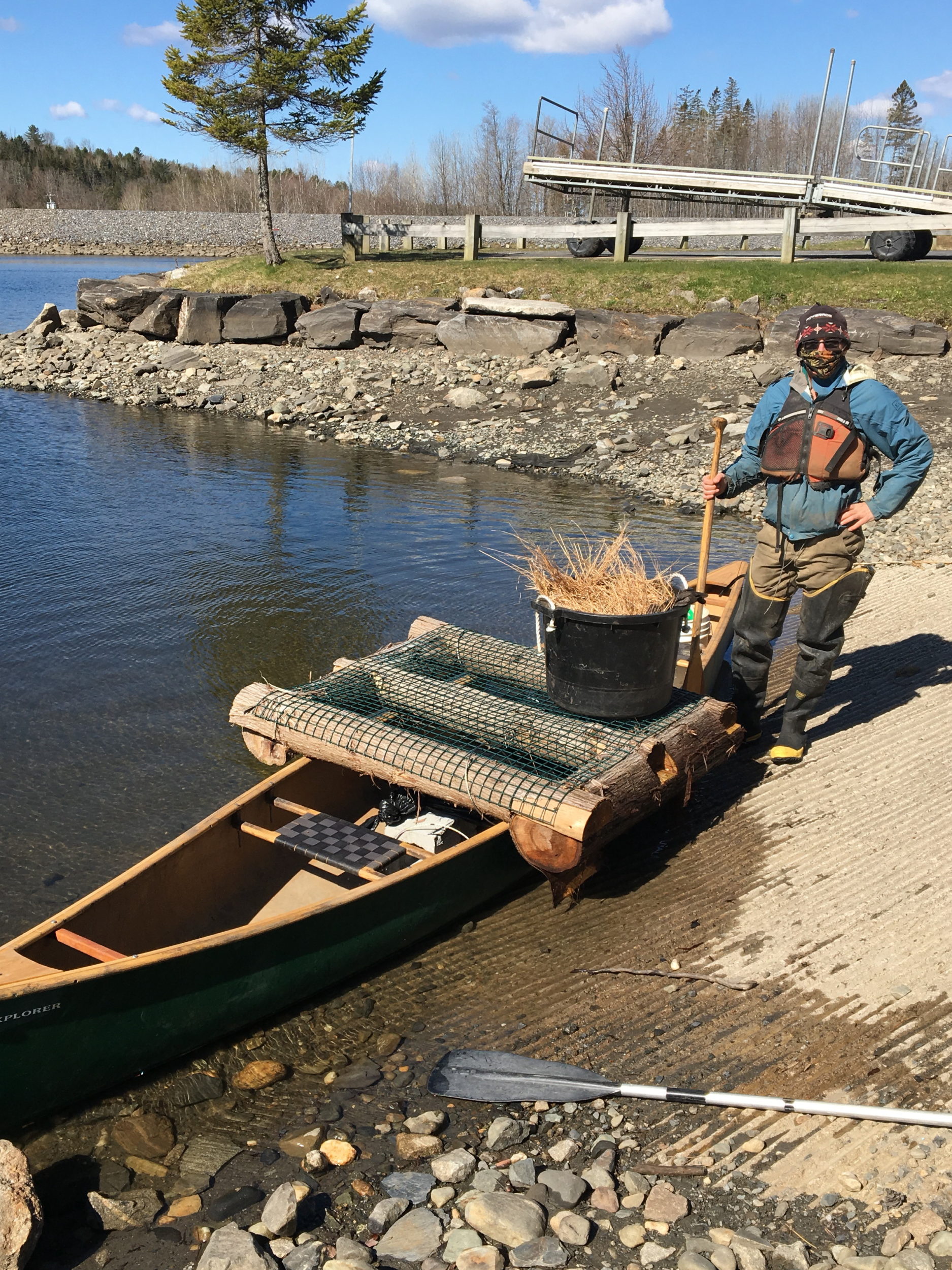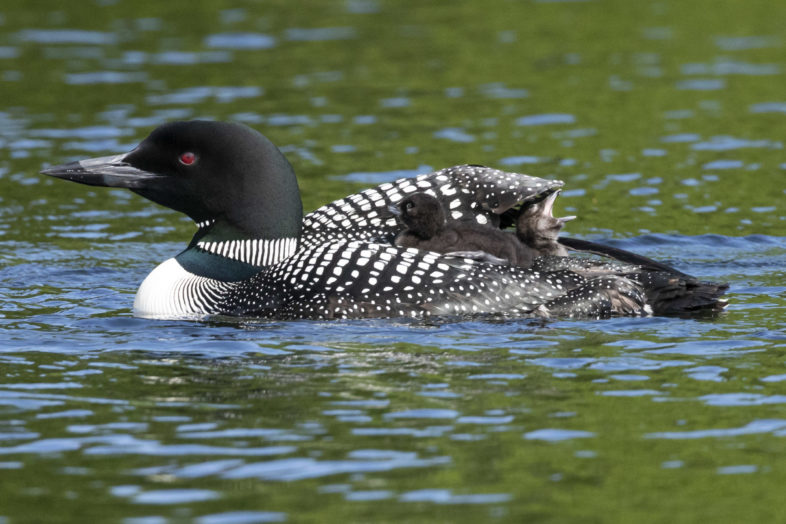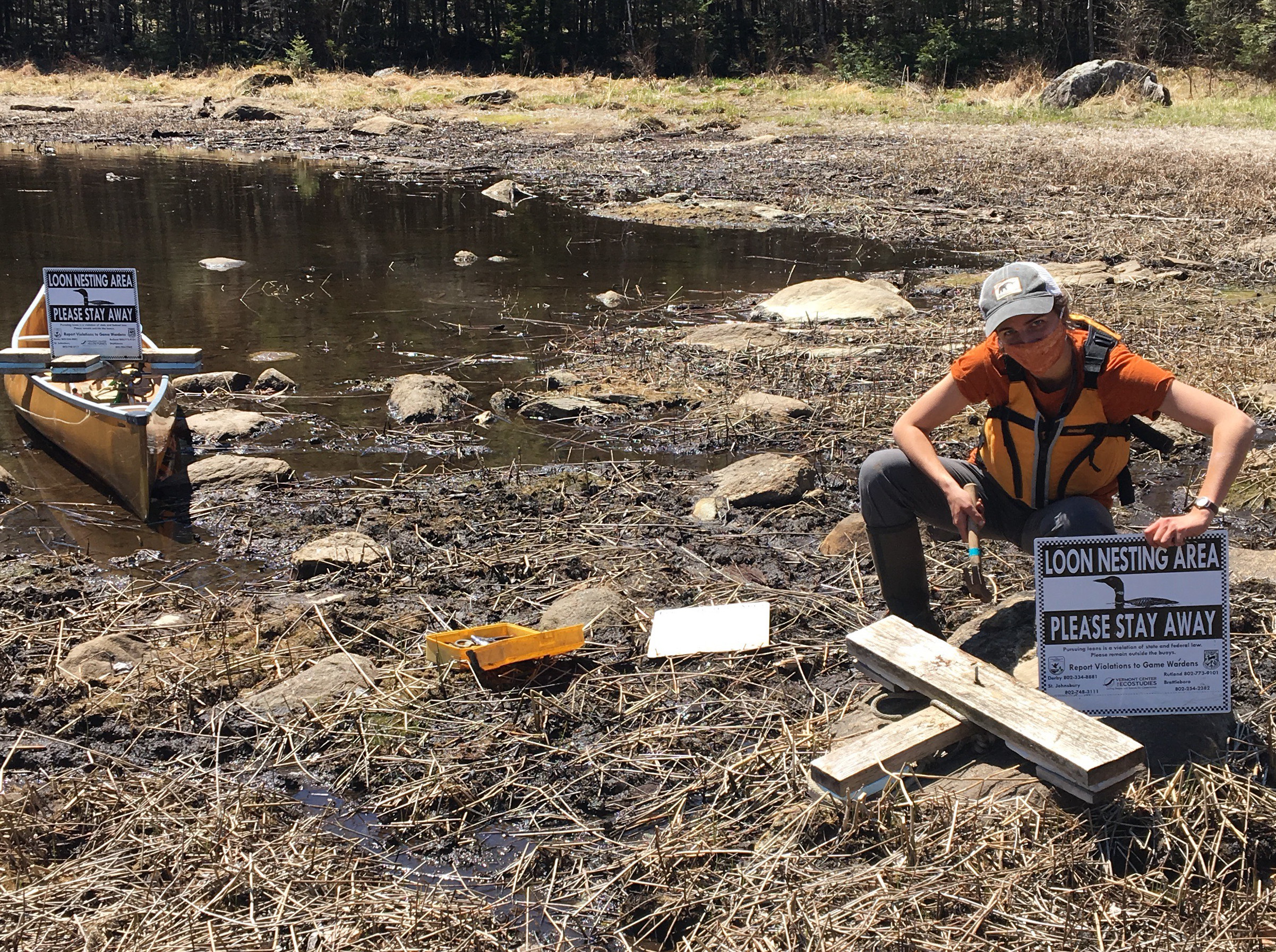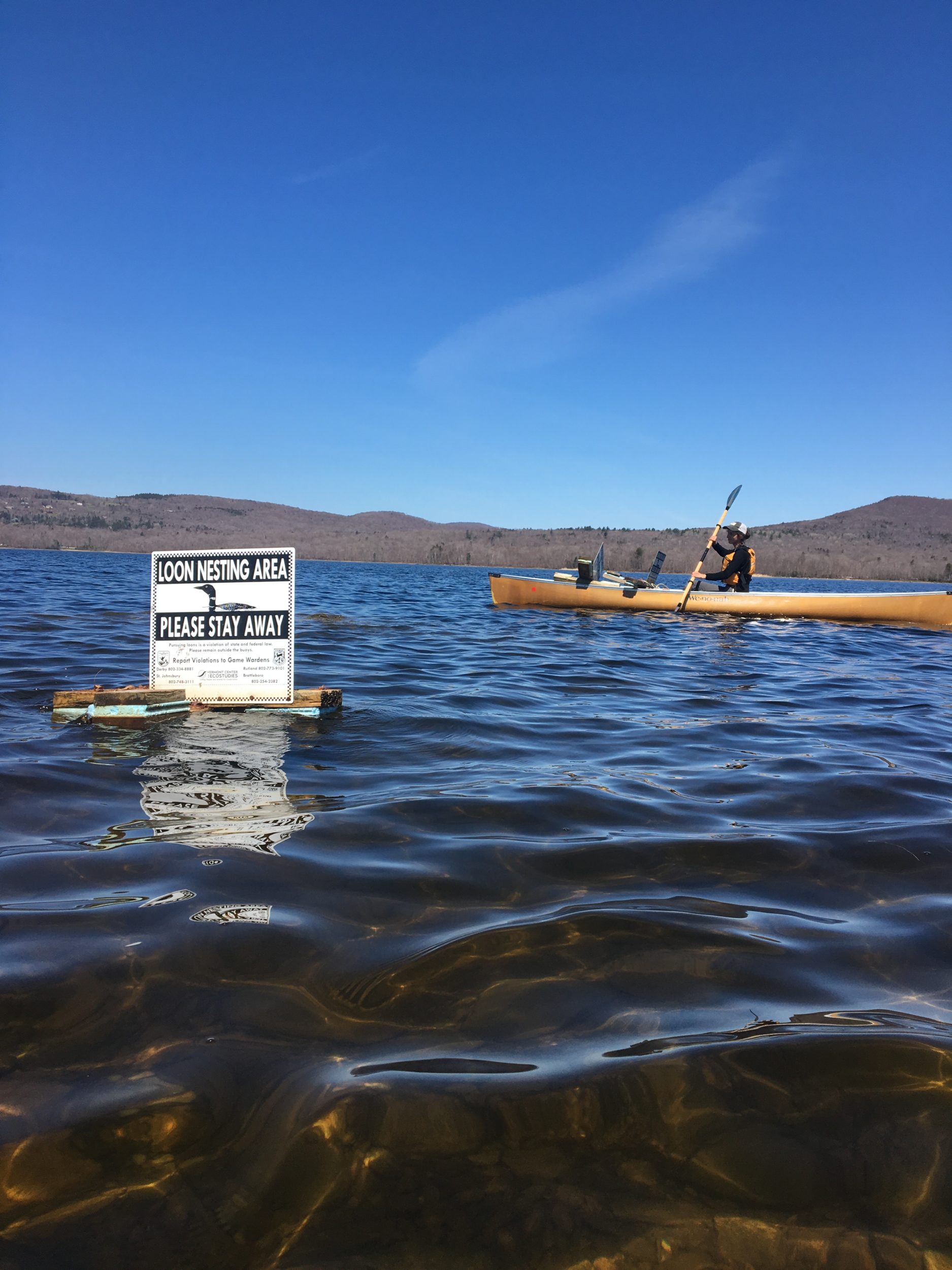
VCE’s loon biologist, Eric Hanson, in the age of COVID-19 launching a raft on Molly’s Falls Reservoir in early May. / © Lewis Short.
With ice-out back in mid- to late-April for most Vermont lakes and ponds, VCE’s citizen scientists who like to paddle and go boating were raring to put their vessels into the water and check on their loon pairs. I’m always a bit concerned about burnout, so I tell everyone that most loons initiate nesting between May 20 and June 15, with some earlier, some later. We did have handful of nests prior to May 20, including Kent Pond, where a chick was reported on June 4. That means this pair was on the nest around May 8—in the top five of early nesting dates. As of June 17, Vermont Loon Conservation Project volunteers and I have confirmed 72 nests, but volunteer reports are still rolling in and we need to make first-time visits to about 10 territories.

The loon pair on Kent Pond had the first chicks of the year on June 4. / © Paul Holmes. (http://www.outdoorimages.ifp3.com)
June 1 was a good survey day: 16 territories visited, 30 loons observed, eight nests confirmed, and one possible nest. I visited a slew of smaller lakes and a few larger ones, and ponds that have no (or few) volunteers. It helps to know where the loon nests are located when visiting so many ponds. I even spotted two birds sitting on nests from my truck window. Several pairs were on the water biding their time, courting, defending, still trying to find the perfect nest spot. Some of these pairs will nest in the next few weeks, others might not for various reasons. I confirmed nests on Lyford and Joe’s Pond, and found a pair on Keiser Pond. The water level at Ewell Pond was down nearly a foot, making that pair’s traditional nest site high and dry. However, the pair has improvised and built a nest bowl out on the exposed mud flat. (We’ll see if it survives shoreline predators.) On Harvey’s Lake, I saw two adults and a third one by itself at the south end. A new pair nested in the south end in 2019, but that nest failed due to its marginal location on an upland shoreline. New pairs that have failed nests often will look for a different spot, but there are not that many options for this pair (no islands or marshes present on the lake). A new pair is forming on Halls Lake in Newbury. Locals reported some nest building activity in 2019, but during this survey, we saw the pair cruising around near the south shoreline with limited marsh habitat. (Update June 18: I just got off the phone with a landowner who observed nest-building recently; I’m headed there for another visit on Saturday).
I headed back north to Peacham Pond, where I found the southwest territorial pair dealing with a third loon, with some chases and wing-rowing. The pair is still trying to establish their territorial boundary. While on the pond, I paddled to the Peacham-north territory (well monitored by Rick and Annette Scholes), and observed the pair mating on the north shoreline. I think I’ve witnessed this less than five times in 25 years of loon watching. I checked their traditional island nest site, and found three different nest bowls—one at water level, and two up much higher. I was astonished to see that one nest had two eggs in it! Rick had seen the pair three days earlier, therefore, these eggs must have just been laid. But why would the pair copulate after egg-laying? Had the nest already failed? In the 10 minutes I watched them from afar, they circled the island but did not climb onto the nest. (Update June 18: Rick confirmed a failed nest after my June 1 visit, but that the pair is considering a re-nest.)
Next up on my June 1 journey was Molly’s Falls Reservoir. I used a spotting scope to see a loon on the new nesting raft in the north end. We built two new rafts for this water body this year because dam repairs required lowering the water level by three feet. Now, the old rafts are sitting on exposed mudflats. It was easier to build new rafts than to try to move these 200+ pound objects across mud where one sinks in 1-2 feet on each step. The “possible nest” was on Buck Lake, where one loon was on the water. Was the mate on a nest? I did not have time to check the two recent nest locations (volunteer Janet Steward confirmed a nest in a new location this past weekend). I finished up the day by confirming nests on Hardwick Lake and Lake Elligo, not far from where I live in Craftsbury.

AnnaLisa Mayer builds nest warning signs on Chittenden Reservoir in mid-May. AnnaLisa is Eric’s former Sterling College ornithology student, and she spent a day job shadowing. / © Eric Hanson
Other updates and notes: One new loon pair on Glen Lake (west of Lake Bomoseen) has been observed nest-building, but in the past few weeks they haven’t seemed interested in their building project anymore. Maybe they were just practicing. Also in Rutland County, we maintain two nesting rafts on Chittenden Reservoir. As of June 17, the north pair is incubating eggs, and the east pair hatched out two chicks this week.
The season is off to a good start despite the temporary hiatus from allowing field work after COVID-19 took over. The loons are not phased by our human crisis, and their consistency and presence is good for us all. We need some stability and inspiration in our lives. Thanks loons.

Placing nest warning signs on Chittenden Reservoir. / © Eric Hanson

I observed a loon with two babies on her back this morning at Berlin Pond, north end. 6/22/20
My wife and I watched 2 adults and 2 juvenile loons on Sunday 6/21/20 on Kent Pond. They were on the dam side of the pond. Got a few pictures but were not sure how to put them on e-bird.
Fred and Lana Bates
The nest on Keyser Pond was obvious with one of the pair on it, in the open on the shallow wetland end, when we were there at the end of June.